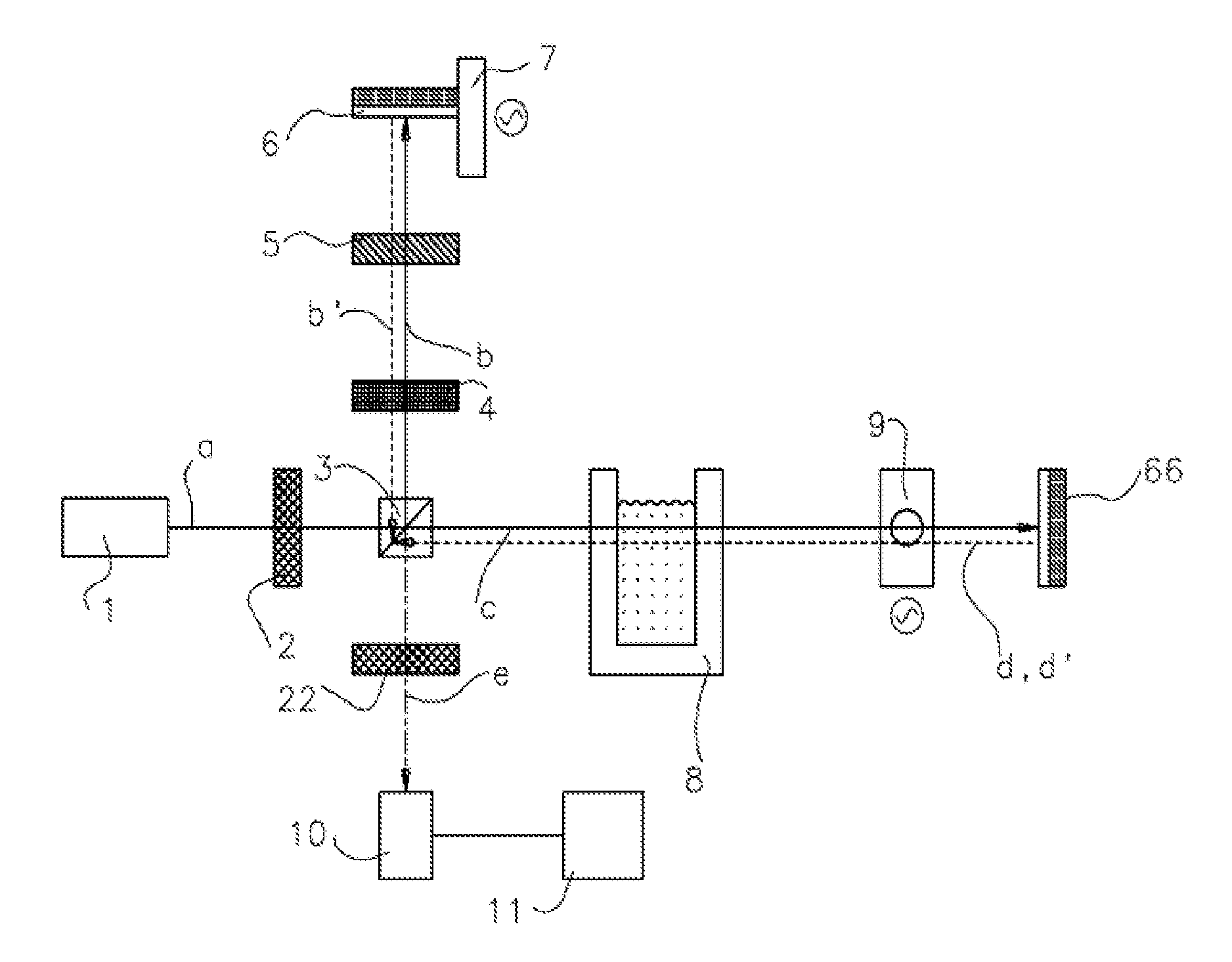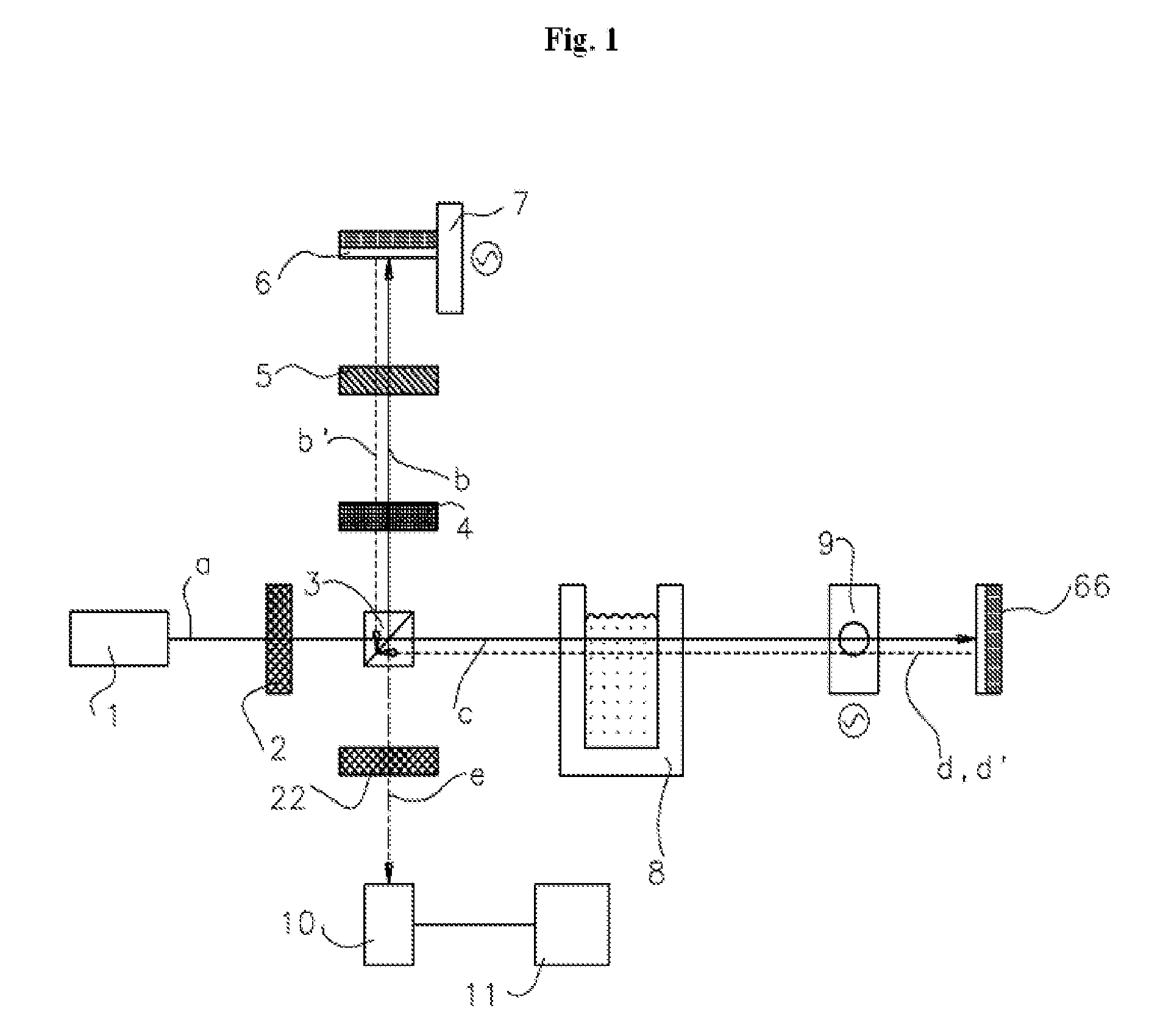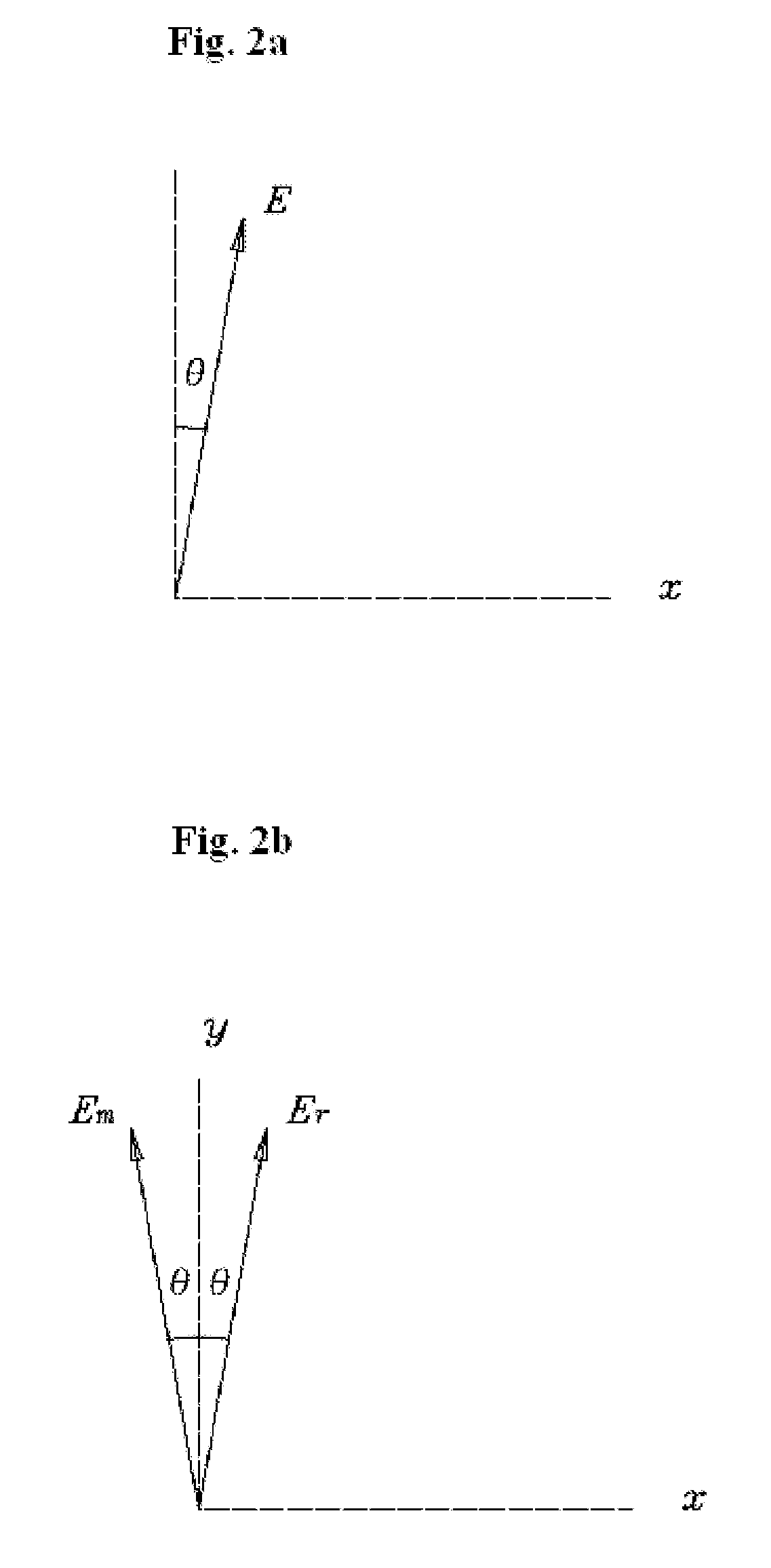Heterodyne polarimeter with a background subtraction system
a heterodyne polarimeter and subtraction system technology, applied in the direction of polarisation-affecting properties, optical radiation measurement, instruments, etc., can solve the problems of severe birth defects, high toxicities of other materials, and inability to always be possible, so as to improve the accuracy of the heterodyne polarimeter
- Summary
- Abstract
- Description
- Claims
- Application Information
AI Technical Summary
Benefits of technology
Problems solved by technology
Method used
Image
Examples
Embodiment Construction
[0058]The invention will now be illustrated by detailed description of the following non-limiting embodiments of the polarimeter of the invention, with reference to the figures. In the following detailed description of the embodiments, reference is made to the accompanying drawings that form a part thereof, and in which are shown by way of illustration specific embodiments in which the invention may be practiced. It is understood that other embodiments may be utilized and structural changes may be made without departing from the scope of the present invention.
[0059]FIG. 1 shows a scheme of a device for the quantitative determination of optically active substances in a solution, conforming to a first exemplary embodiment. The device includes a laser source that emits coherent light. The wavelength of the emitted light can typically range from 400 nanometers to 900 nanometers.
[0060]The laser source 1 generates a first coherent light beam (a). The first light beam (a) passes through a ...
PUM
| Property | Measurement | Unit |
|---|---|---|
| frequency | aaaaa | aaaaa |
| frequency shift | aaaaa | aaaaa |
| wavelength | aaaaa | aaaaa |
Abstract
Description
Claims
Application Information
 Login to View More
Login to View More - R&D
- Intellectual Property
- Life Sciences
- Materials
- Tech Scout
- Unparalleled Data Quality
- Higher Quality Content
- 60% Fewer Hallucinations
Browse by: Latest US Patents, China's latest patents, Technical Efficacy Thesaurus, Application Domain, Technology Topic, Popular Technical Reports.
© 2025 PatSnap. All rights reserved.Legal|Privacy policy|Modern Slavery Act Transparency Statement|Sitemap|About US| Contact US: help@patsnap.com



